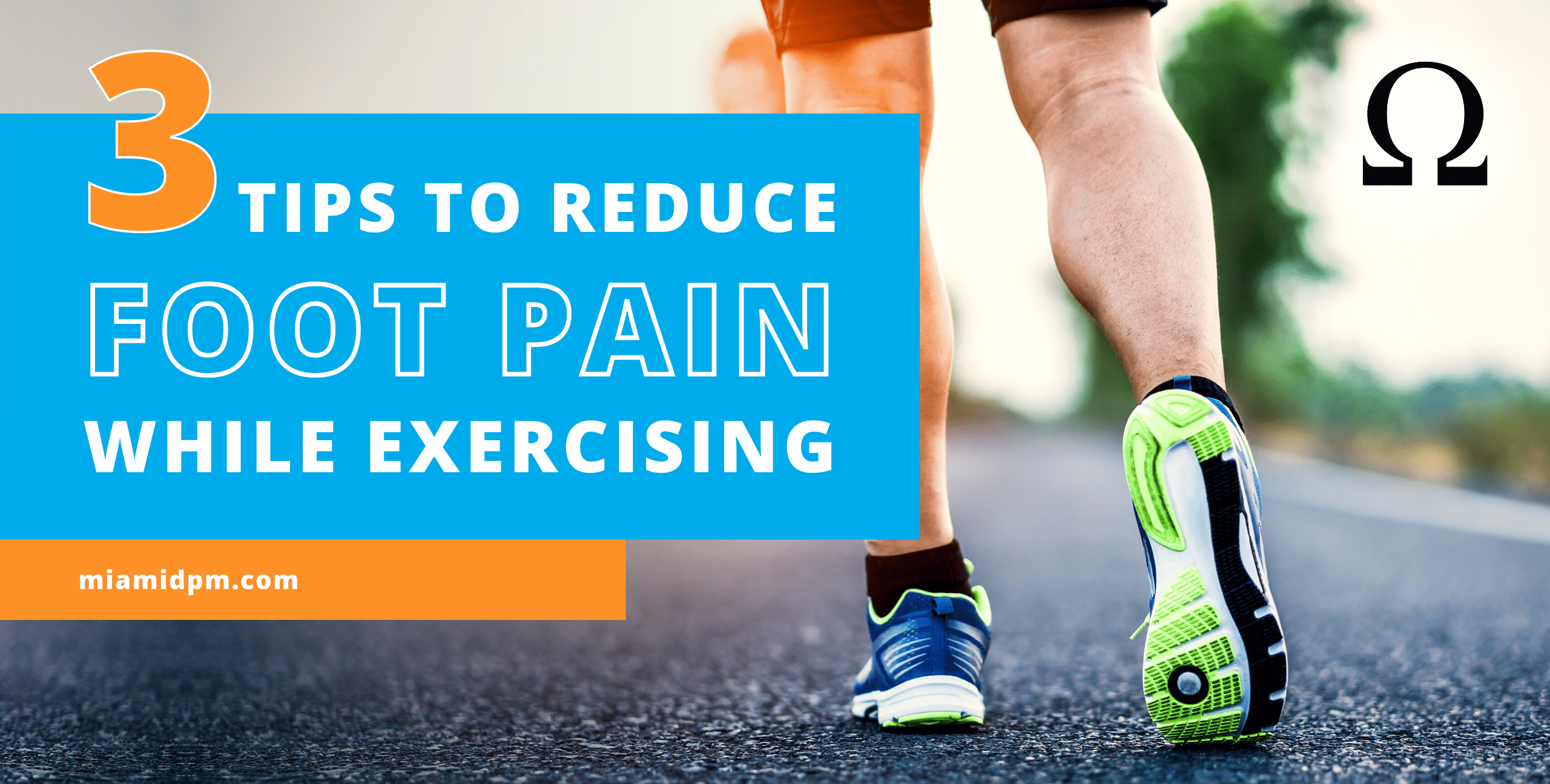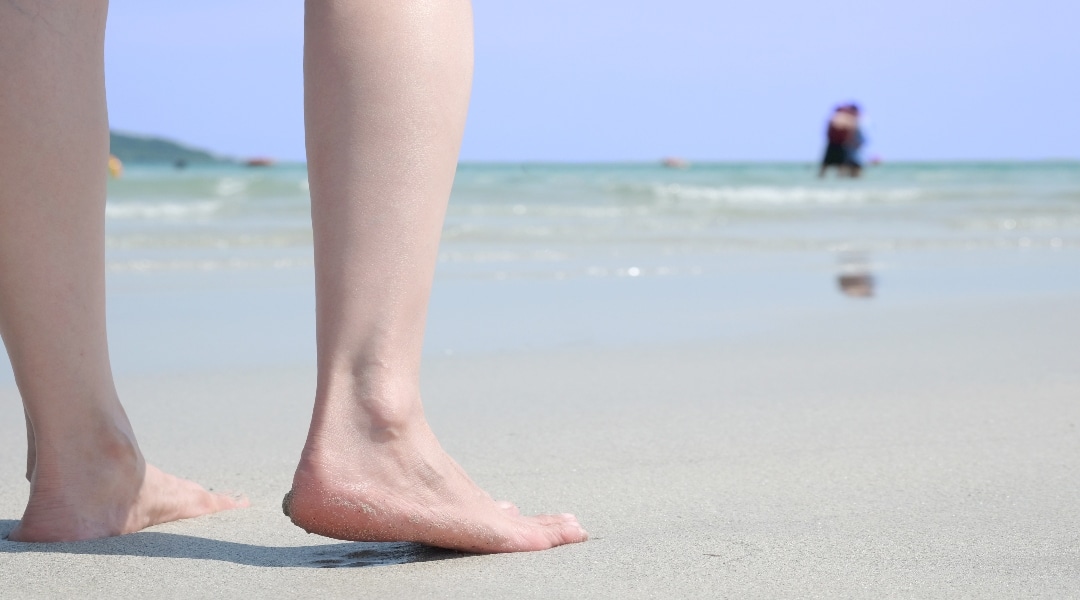3 Tips to Reduce Foot Pain While Exercising
The pandemic has unquestionably changed many aspects of daily life. One potential surprise for some is how it has created a fresh influx of outdoor runners on our trails and streets!
Some of them are gym-goers yearning to move but not having a treadmill to work with. Others are newcomers who were simply sick of staying at home. But whatever the reason or your past experience, making the effort to (safely) get outside and get moving more can be a big plus for your physical and emotional well-being.
A big negative that can arise, however, is heel pain or foot pain that can arise while exercising. It can be a big killer to your budding ambitions, and you don’t need to be just starting out to be at risk. Any potential change in the type or intensity of activity you perform can cause pain and strain, even if you have had regular workout routines beforehand.
If you have started to feel foot or ankle pain while exercising, or have concerns that you may, there are simple steps you can take to help protect your foot pain while exercising. The first is contacting us for professional help and advice!

Direct Treatment and Preventative Care
Whether foot pain is just starting to develop or has been around for a while, you should never simply wait and hope it gets better on its own. Most of these conditions don’t get better without properly addressing them, especially if an intrinsic problem such as an abnormality in your foot structure (e.g. high arches, flat feet) is a contributing factor.
We will conduct a thorough examination to get to the root of your condition, then recommend a course of treatment that can most effectively address it and help avoid future problems.
For example, in cases where your foot structure is causing excess force and stress in certain areas of your foot, we may recommend functional custom orthotics to provide corrective support and cushioning exactly where it’s needed. Not only can custom orthotics help prevent excess strain on your feet and ankles as you run, but the motion correction they provide can have positive effects running up through your legs, knees, hips, and lower back as well!
Treatments such as functional custom orthotics can provide outstanding and lasting effects for runners and other athletes, but they should not be taken as a free ticket to do anything you want while exercising.
Taking personal steps to protect your feet while running and working out is still very important, and the more mindful you are of what you’re doing, the better you’ll be able to reduce your sports injury risks. Here are some additional easy steps to keep in mind.
Wear the Proper Footwear for Your Activity
Custom orthotics can significantly influence your foot and ankle safety, and so can your shoes!
Make sure the design of your shoes fits the demands of your activity. If you’re running, then, you should be wearing a pair of running shoes. They are made to accommodate the repetitive impacts of your feet against the ground much better than general “sneakers” or even walking shoes can. Tennis shoes and basketball shoes, on the other hand, are built to provide better protection for quick side-to-side movements—very important for helping to prevent ankle injuries.
Regardless of your shoe type, you will not receive much support at all if they are worn out. A properly trained associate at a sporting goods store can help you determine the best type of footwear for your activities and needs.
Warm Up Before You Get Going
Taking a few minutes to warm up before engaging in vigorous activity gives your muscles and soft tissues time to adjust to the demands you’re about to set upon them. If you go full force while still “cold,” the shock can cause significant strain and damage.
A good warmup should focus more on dynamic stretching instead of static stretching. In other words, instead of standing still and holding stretches, get some light movement in. Do some light jogging, lunges, and butt-kicks, for example, and save the static stretching for a cool-down.
Focusing on your heels and calf muscles can help prevent heel pain injuries, and we can provide our recommendations for how you can get the most out of warm-ups before you routines.
Know and Respect Your Limits
So much of exercise is about improvement, and working toward goals is good! That said, your approach to improvement can have a big impact on your injury risk.
When we exercise, we are breaking our bodies down on a cellular level. When we rest, our cells have the opportunity rebuild stronger and better able to endure activity. That’s how we increase our fitness!
But if we subject the same body parts or muscle groups to too much strain all at once, or make them endure too much stress over time without enough rest (common with runners), recovery can’t keep up with breakdown and an injury can happen.
When starting any new activity, it pays to begin at a relatively low intensity and gradually work your way upward. An increase of 10-15 percent of time, distance, or weight per week is reasonable, but do not be afraid to dial it down even more if the increase does not feel right. It will always be better to reach your goals slowly and steadily than to be forced to spend time sitting out with an injury.

Keep That Momentum!
Whatever the future has in store, we hope you can continue to strive forward with your activity and fitness goals. Being proactive about your foot and ankle health will go a long way toward those achievements.
Our offices in Miami Shores and North Miami Beach remain open to serve you. We specialize in sports medicine, with advanced treatment options to help you heal quickly, and we do everything we can to keep you as active as possible throughout your recovery.
You can request a safe in-office appointment or consult with us over video chat via a teleconference appointment. We’ll be happy to meet with you in a way that best suits your needs. Take the first step by calling us at (305) 514-0404 or filling out our online contact form to reach us.
